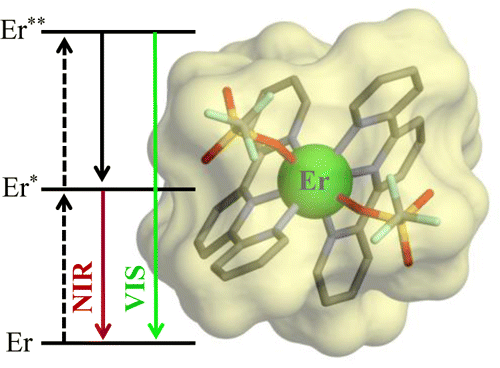-
Taming Lanthanide-Centered Upconversion at the Molecular Level

Y. Suffren, B. Golesorkhi, D. Zare, L. Guénée, H. Nozary, S.V. Eliseeva, S. Petoud, A. Hauser and C. Piguet
Inorganic Chemistry, 55 (20) (2016), p9964-9972


DOI:10.1021/acs.inorgchem.6b00700 | unige:89168 | Abstract | Article HTML | Article PDF | Supporting Info

Considered at the beginning of the 21th century as being incompatible with the presence of closely bound high-energy oscillators, lanthanide-centered superexcitation, which is the raising of an already excited electron to an even higher level by excited-state energy absorption, is therefore a very active topic strictly limited to the statistical doping of low-phonon bulk solids and nanoparticles. We show here that molecular lanthanide-containing coordination complexes may be judiciously tuned to overcome these limitations and to induce near-infrared (NIR)-to-visible (VIS)-light upconversion via the successive absorption of two low-energy photons using linear-optical responses. Whereas single-ion-centered excited-state absorption mechanisms remain difficult to implement in lanthanide complexes, the skillful design of intramolecular intermetallic energy-transfer processes operating in multimetallic architectures is at the origin of the recent programming of erbium-centered molecular upconversion.